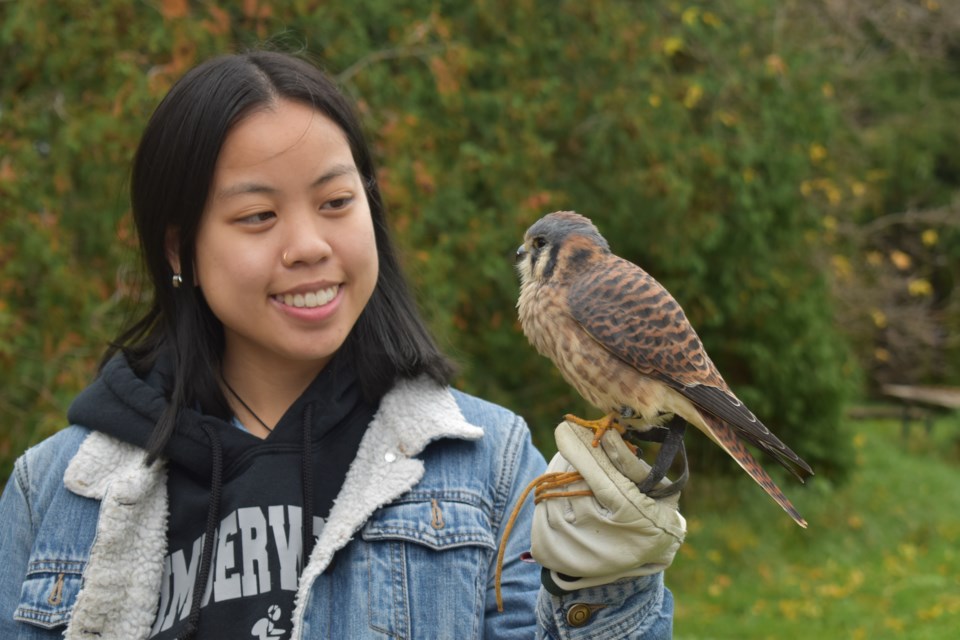Situated deep within The Arboretum on the University of Guelph campus sits a building housing 15 birds-of-prey ranging from the American kestrel to a great horned owl to the newest bird-of-prey, Grimsby the turkey vulture.
Although the name has changed, for 30 years student-volunteers at the U of G have been working one-on-one with live birds of prey to learn about science and make connections to nature.
Now known as Wild Ontario, a program within the integrative biology department in the College of Biological Science, student volunteers work face-to-face with the birds as a form of experiential learning.
Started in 1981 as the U of G Wild Bird Clinic Education Program, the program was revamped in the 1990s with the formation of the Wild Bird Clinic Education Program.
The program underwent funding constraints and the Wild Bird Clinic was forced to close in 2006.
In 2010 the program was re-branded once again and relaunched as Wild Ontario and since then has been providing hands-on education and leadership for U of G students.
“They learn everything, from the basics on animal care and husbandry to contemporary animal training and positive reinforcement training with raptors, safe restraint and all kinds of neat things like that,” said Jennifer Bock, program director at Wild Ontario. “A big part of the volunteer course job is to help the birds be healthy and safe and happy, but also comfortable when we are going out to do public programming.”
Wild Ontario provides a long-term home for birds that can no longer survive in the wild, providing them with a state-of-the-art habitat while bringing the birds to organizations, events and schools as learning opportunities.
“Under normal circumstances lots of schools, lots of community groups, festivals and fairs, and as long as the group is learning about the biology, natural history and the conservation messaging then we are happy to go,” said Bock.
The birds have even been the focal points of some birthday parties.
Volunteers work with the bird and learn how to properly take care of their special needs while educating others on the history of the bird, its natural habitat and how it would interact if it lived in the wild.
“I’ve been in the program almost four years now and it is incredible, the things you learn the people you meet, and it definitely helps with career-wise choices if you want to work in education it gives you opportunities for that,” said Farqd Barghash, a student-volunteer with Wild Ontario.
“You get a lot of experience here, both hands-on in terms of working with raptors and learning about training and working closely with a team. It’s just an incredible opportunity and every day it’s like ‘how am I here - I’m holding a falcon on my glove.”
While the program might not be known outside the U of G community, those inside who want to participate are up against stringent competition as over 100 students applied for the current openings with only around a dozen new trainees being brought in.
This is lower than usual as Bock said she believes the implications from COVID-19 deterred some from applying, whereas in normal years she can expect to receive at least double that number of applicants.
Using the education learned on the job, the seasoned volunteers take the newbies under their wing to teach them the relationship dynamics with the birds, and train them of the proper etiquette in care to be alert for when interacting with the birds.
“This is a special and unique learning opportunity,” said Bock.



